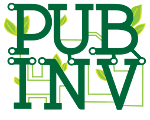On June 15th, Public Invention held its first in-real-life event since the pandemic in the Austin Public Library. We held a “demo day” demonstrating a lot of our physical inventions, and some software demos thrown in. Overall, it was a success, though the turnout was disappointing: we only met about 20 people that we had not know before. We had 5 people come from across the US, and even from Lebanon, to help do the demo day.
We learned a lot, which we captured in the postmortem below.
Although we mostly work with remote teams, it was nice to have an in-real-life event, and for some volunteers to be able to see projects different from their own in depth.
We also held a fundraiser at a local brewpub, where a hired a professional comedian. This was also a useful event, because it created a since of camaraderie and brought us all together. Sadly, we made about $1000 in donations, and spent about $800 on the fundraiser, about $400 on promotion, and about $600 on renting the Austin Public Library demo area and insurance, so we did not break even. However, small public charities such as ourselves gain many intangible benefits from holding a public fundraiser, even if we lose money, especially public exposure.
2025 Demo Day Postmortem
Public Invention’s first Demo Day was an overall success. In the Austin Library at the beginning of summer 2025, student contributors, Invention Coaches, and even international volunteers met in-person to share the results of their hard work with each other and the audience. The final event at the Brewtorium, with drinks and a great comedian, solidified the evening as a great team building event. It highlighted Public Invention’s culture and collaborative community.
Another key victory was that these inventors shared their work with a wider audience, the public. An in-person audience, general passersby, and the online viewers of the Demo Day engaged with the projects directly. The event also recruited new members and brought in $1,000 in donations. Overall, this event was a major stepping stone to achieving Public Invention’s wider aim of inventing in the public, for the public.
Additional benefits of this event are the opportunities for growth and improvement it has highlighted. Through targeting several key areas, the team can make both a higher quantity and quality of connections in future outreach. For instance, contacting and collaborating with organizations such as Makerspace or the UT Math Club, and gaining promotion through newsfeeds such as The Austin Chronicle, should become a higher priority for future events. Pre-event outreach will help Public Invention connect its presentations with a wider audience.
Regarding the presentations themselves, however, three major areas must be improved for future outreach; audience engagement, the presentation quality, and the use of presentation technology. With these areas in mind, Public Invention will continue to reach new people who want to get involved with its projects and mission through future events.
Viewers stayed throughout the entire set of presentations, donated, and even volunteered. However, the presentation could engage the audience even more and increase these results. Providing the audience with physical takeaways, such as business cards, flyers, t-shirts, or an auctioned invention, would bring them into collaboration with the team and help them feel more immersed in our work. Additionally, providing snacks and water would help keep them comfortable throughout the entire event.
Related to audience engagement, clearing out the presentation technology kinks will greatly improve future events. Making sure the entire audience can hear both the presenters and those asking questions will help achieve this aim. Having good microphones and microphone usage is also imperative to succeeding in this area. Additionally, stationing cameras to clearly show each demonstration, organizing the slide deck to be more cohesive, and prominently displaying QR codes to connect with Public Invention online will strengthen the impact of the event.
The Demo Day also highlights that future presenters need to thoroughly practice the presentations before the actual event. Introducing each speaker, making sure each demonstration is clear and follows a step-by-step structure, and transitioning smoothly between projects would increase audience comprehension. Integrating the distribution of relevant rewards could also provide an intermission between presentations, or support the introduction of presenters. This will widen the accessibility of Public Invention’s projects.
Improving inter-organizational collaboration, audience engagement, technology usage, and presentation quality will all support the final call to action of the event; that is, to get involved and support Public Invention’s mission to invent in the public, for the public. However, as it stands, the 2025 Demo Day was a step in the right direction for future outreach. Ultimately, the inventors’ abilities to learn, test, innovate, and adapt accordingly are all aspects of what makes Public Invention itself. Continuing to innovate when it comes to outreach will increase Public Invention’s impact and further support the collaborative nature of open-source technology.
